Camera Comparison: Samsung Galaxy S22 Ultra vs. iPhone 13 Pro Max
In the ever-evolving world of smartphone photography, two titans consistently push the boundaries of what’s possible: Samsung and Apple. Their flagship models, the Samsung Galaxy S22 Ultra and the iPhone 13 Pro Max, represent the pinnacle of mobile imaging technology as of their respective releases. Both devices promise professional-grade photography in your pocket, but how do their cameras truly stack up against each other?
This article delves deep into the camera systems of the Galaxy S22 Ultra and iPhone 13 Pro Max, comparing their hardware, software, image quality, features, and real-world performance. Whether you’re a photography enthusiast, a casual snapper, or someone deciding between these two flagships, this comprehensive comparison will help you make an informed decision.
1. Camera Hardware Overview
Samsung Galaxy S22 Ultra
Main Camera: 108MP, f/1.8, 1/1.33″, PDAF, Laser AF, OIS
Periscope Telephoto: 10MP, f/4.9, 10x optical zoom, OIS
Telephoto: 10MP, f/2.4, 3x optical zoom, OIS
Ultra Wide: 12MP, f/2.2, 120˚ FoV
Front Camera: 40MP, f/2.2
iPhone 13 Pro Max
Main Camera: 12MP, f/1.5, 1/1.65″, Dual Pixel PDAF, Sensor-shift OIS
Telephoto: 12MP, f/2.8, 3x optical zoom, OIS
Ultra Wide: 12MP, f/1.8, 120˚ FoV, PDAF
Front Camera: 12MP, f/2.2
Key Differences
The S22 Ultra boasts a much higher resolution main sensor (108MP vs. 12MP).
Samsung offers two telephoto lenses (3x and 10x), while the iPhone has one (3x).
Both feature ultra-wide cameras with similar fields of view.
The S22 Ultra’s selfie camera is higher resolution (40MP vs. 12MP).
2. Camera Software and Features

Samsung Galaxy S22 Ultra
Expert RAW app for advanced manual controls and RAW shooting.
Single Take mode: Captures photos and videos with one press.
Super Resolution Zoom (up to 100x digital).
Nightography: Enhanced night mode.
AI Scene Optimization.
Director’s View: Record from multiple cameras simultaneously.
iPhone 13 Pro Max
Photographic Styles: Customizable tone and warmth.
ProRAW and ProRes video support.
Deep Fusion and Smart HDR 4 for computational photography.
Cinematic Mode: Shallow depth of field videos with focus transitions.
Night Mode on all cameras.
Apple’s seamless integration with third-party photo/video apps.
Key Differences
Samsung offers more manual controls out of the box.
Apple excels in computational photography and video features like Cinematic Mode.
3. Photo Quality Comparison
Daylight Photography
Galaxy S22 Ultra:
Delivers high-resolution images with lots of detail, thanks to its 108MP sensor.
Colors tend to be vibrant, sometimes exaggerated for a “pop” effect.
Dynamic range is excellent, with good retention in highlights and shadows.
iPhone 13 Pro Max:
Produces natural, true-to-life colors.
Detail is impressive despite the lower resolution, thanks to larger pixels and computational processing.
Dynamic range is among the best, with smart handling of challenging lighting.
Comparison:
The S22 Ultra’s images are sharper, especially when zoomed in, but can appear over-processed.
The iPhone’s shots are more accurate to real life, with less aggressive sharpening and saturation.
Low-Light and Night Photography
Galaxy S22 Ultra:
Night mode is powerful, with the large sensor gathering ample light.
Images are bright and detailed, though sometimes noise reduction can soften textures.
Nightography mode uses AI to enhance clarity.
iPhone 13 Pro Max:
Night mode activates automatically and delivers bright, clean images.
Deep Fusion technology enhances detail in low light.
Colors and white balance remain consistent.
Comparison:
Both phones excel in low light, but the S22 Ultra often produces brighter images.
The iPhone tends to retain more natural detail and color accuracy.
Ultra-Wide Photography
Galaxy S22 Ultra:
12MP ultra-wide with decent detail and minimal distortion.
Night mode available, but performance drops compared to the main sensor.
iPhone 13 Pro Max:
12MP ultra-wide with a wider aperture (f/1.8).
Excellent edge-to-edge sharpness and minimal distortion.
Night mode works very well on ultra-wide, maintaining color and detail.
Comparison:
The iPhone’s ultra-wide camera is generally superior, especially in low light.
Telephoto and Zoom
Galaxy S22 Ultra:
Dual telephoto lenses: 3x and 10x optical zoom.
Up to 100x digital zoom with surprisingly usable results up to 30x.
OIS on both telephoto lenses aids stability.
iPhone 13 Pro Max:
Single 3x optical zoom telephoto lens.
Digital zoom up to 15x, but quality drops significantly beyond 3x.
Comparison:
The S22 Ultra is the clear winner for zoom. Its 10x optical lens delivers crisp images at long distances, and even at 30x, results are impressive for a smartphone.
Portraits and Depth Effects

Galaxy S22 Ultra:
Uses AI and depth mapping for bokeh effects.
Background separation is good, but can struggle with complex subjects.
Offers various portrait lighting effects.
iPhone 13 Pro Max:
Portrait mode is refined, with excellent subject separation and natural bokeh.
Offers multiple lighting styles and effects.
Front camera portrait mode is among the best.
Comparison:
The iPhone consistently delivers more natural-looking portraits with better edge detection.
Samsung offers more creative flexibility, but sometimes the effect can look artificial.
4. Video Quality Comparison
Resolution and Frame Rates
Galaxy S22 Ultra:
8K video at 24fps (main camera).
4K at up to 60fps (all cameras).
Super Steady mode for action shots.
Director’s View for multi-cam recording.
iPhone 13 Pro Max:
4K video at up to 60fps (all cameras).
ProRes video recording (up to 4K 30fps).
Cinematic Mode (1080p at 30fps).
Sensor-shift OIS for ultra-stable footage.
Video Performance
Galaxy S22 Ultra:
8K is high-res but limited in dynamic range and stabilization.
4K video is sharp, vibrant, and smooth.
Autofocus is fast, though can hunt in low light.
iPhone 13 Pro Max:
4K video is the gold standard: sharp, color-accurate, and stable.
Cinematic Mode adds professional-looking focus racking.
ProRes support is a boon for professionals.
Comparison:
The iPhone 13 Pro Max is widely regarded as the best smartphone for video, thanks to its color science, stability, and focus transitions.
The S22 Ultra offers more resolution and flexibility, but Apple’s video quality is more consistent and reliable.
5. Front Camera Performance
Galaxy S22 Ultra:
40MP sensor produces highly detailed selfies.
Night mode available.
Wide field of view for group selfies.
iPhone 13 Pro Max:
12MP sensor, but excellent image processing.
Night mode and Deep Fusion for selfies.
Natural skin tones and accurate colors.
Comparison:
The S22 Ultra offers higher resolution and more detail, but can sometimes over-smooth skin.
The iPhone produces more natural, flattering selfies with better dynamic range.
6. Camera App and User Experience
Galaxy S22 Ultra:
Feature-rich app with numerous modes and manual controls.
More options for enthusiasts, but can be overwhelming for casual users.
Quick access to advanced features like RAW and Pro mode.
iPhone 13 Pro Max:
Simple, intuitive camera app.
Most features work automatically, with minimal user intervention.
ProRAW and ProRes are accessible but require toggling in settings.
Comparison:
Samsung’s app is more versatile for advanced users.
Apple’s app is easier for everyday use and rarely misses a shot.
7. Computational Photography and AI

Galaxy S22 Ultra:
AI Scene Optimizer automatically adjusts settings for different scenes.
Multi-frame processing for improved dynamic range and noise reduction.
Portrait and night modes heavily rely on AI.
iPhone 13 Pro Max:
Deep Fusion and Smart HDR 4 for optimal detail and dynamic range.
Photographic Styles allow user customization of tone and warmth.
Night mode uses machine learning for stunning low-light results.
Comparison:
Both devices use AI to improve photos, but Apple’s computational photography is more seamless and natural.
Samsung’s AI is more aggressive, resulting in punchier images.
8. Sample Image Comparisons
(Note: For a real-world article, this section would include side-by-side image samples. Here, we describe typical outcomes.)
Daylight: S22 Ultra images are sharper and more vibrant; iPhone images are more true-to-life.
Low Light: S22 Ultra is brighter; iPhone is more detailed and color-accurate.
Zoom: S22 Ultra dominates at high zoom levels.
Portraits: iPhone produces more natural bokeh and skin tones.
Video: iPhone is smoother, more stable, and offers better color grading.
9. Special Features
Galaxy S22 Ultra
100x Space Zoom: Unique for long-range photography.
Expert RAW: For professional editing.
S Pen integration: Useful for remote shutter and editing.
iPhone 13 Pro Max
Cinematic Mode: Focus transitions for video storytelling.
ProRAW/ProRes: Industry-leading formats for professionals.
Seamless ecosystem: Effortless integration with Mac and iPad for editing.
10. Battery Life and Storage Considerations
Video and high-res photo capture can quickly fill storage; both offer 128GB to 1TB options.
Battery life is excellent on both, but 8K video on the S22 Ultra drains battery faster.
11. Which Camera Is Better for You?
Choose the Galaxy S22 Ultra if you:
Want the most flexible zoom capabilities.
Prefer punchy, vibrant images.
Enjoy manual controls and advanced features.
Need higher resolution for cropping or printing.
Choose the iPhone 13 Pro Max if you:
Value natural color and consistent image processing.
Shoot a lot of video, especially for professional use.
Prefer a simpler, more intuitive camera app.
Want the best low-light and portrait performance.
Both the Samsung Galaxy S22 Ultra and iPhone 13 Pro Max are outstanding camera phones, each excelling in different areas. The S22 Ultra pushes the boundaries with its high-resolution sensor and impressive zoom, ideal for enthusiasts and those who want maximum flexibility. The iPhone 13 Pro Max, on the other hand, offers unmatched consistency, natural color science, and industry-leading video capabilities, making it the go-to choice for most users and professionals alike.
Ultimately, your choice should depend on your personal preferences, shooting habits, and which features matter most to you. Either way, you’ll be carrying one of the best smartphone cameras available today.
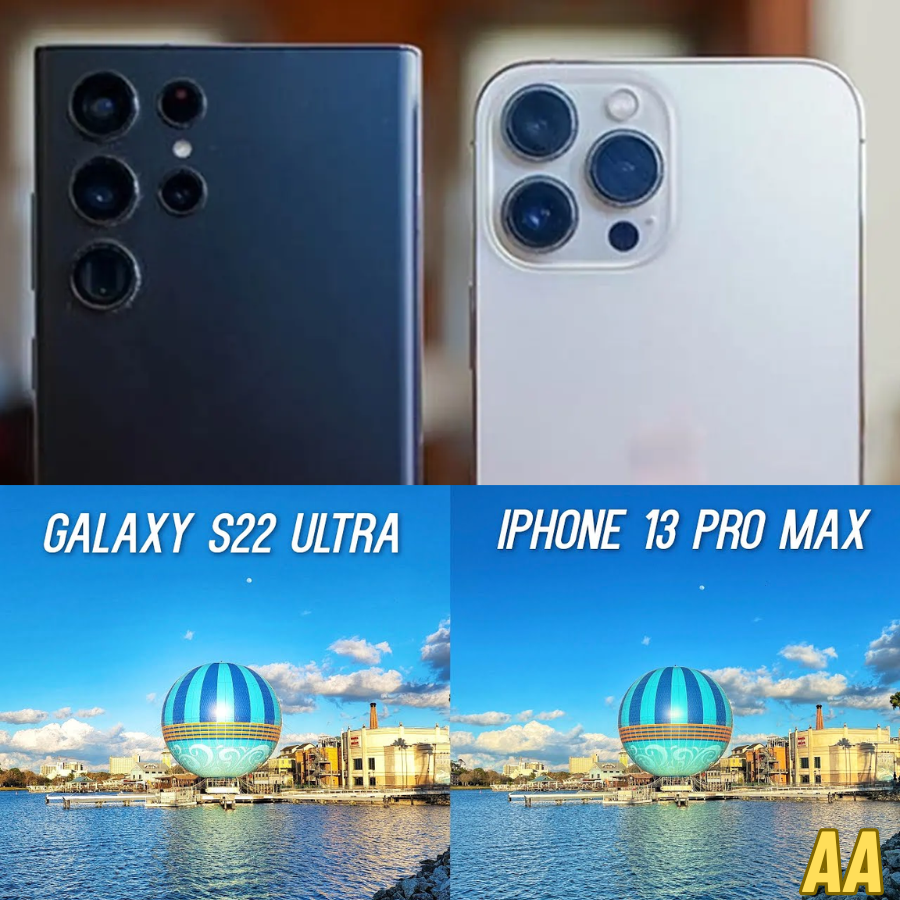
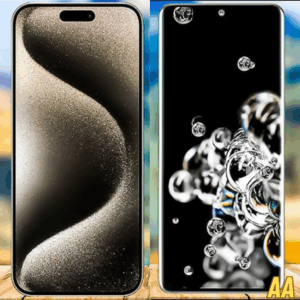
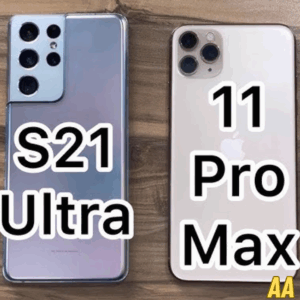
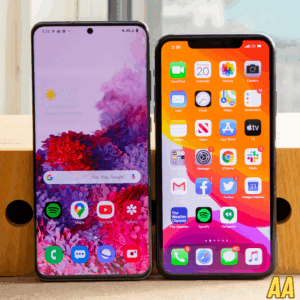
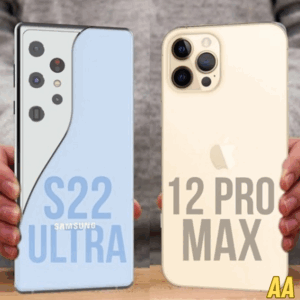

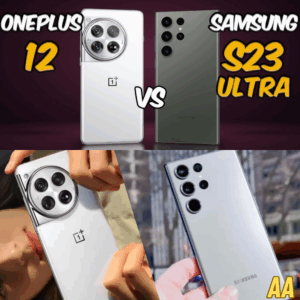
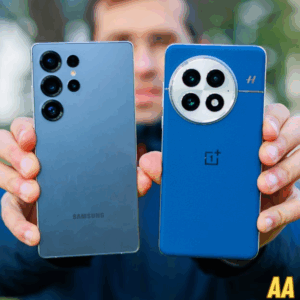
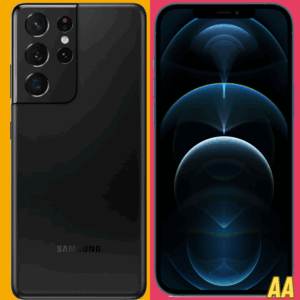
Trackbacks and Pingbacks